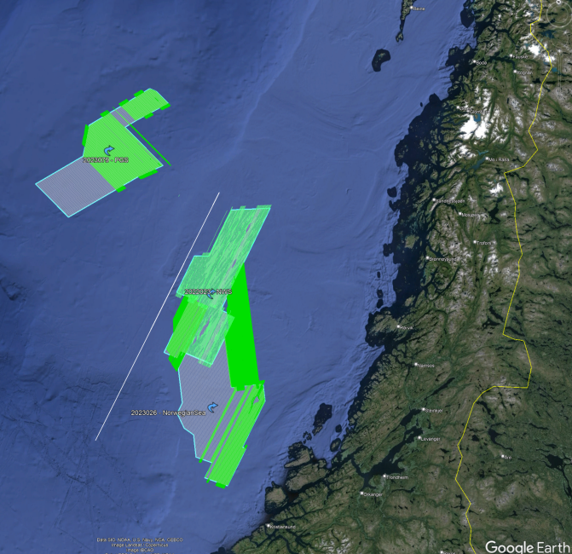Shipping's tradition of data sharing
To share information about weather, currents, the seabed, etc. has always been part of the culture at sea. Information that could be useful to others was and is shared. And when Morse code and the telegraph came into full swing, it was possible to share data in near real time, which has benefited shipping, the fishing industry and weather forecasts.
It is in line with this tradition that Centre for research drive innovation (SFI) Harvest’s partner Petroleum Geo-Services (PGS) believes it is important to share data - both with SFI Harvest and others.
The main activity of PGS is to use seismic (high-frequency sound) to uncover and map possible oil and gas reservoirs on the seabed for its customers. But in order to use seismics, one must also have control over several other parameters and check that one does not fire high-frequency sound at marine mammals, which can suffer hearing damage. This means that a whole range of other types of data have to be collected.
One example is off the coast of Brazil where PGS has sailed back and forth for several years and collected this 'extra data' in addition to seismic data.
"We don't measure anything extra. We use the data we collect anyway, so it can be of value to others as well," Vice President for Special Operations Einar Nielsen at PGS explains.
Such data will be shared with SFI Harvest. Organising your own research cruises is both time-consuming and expensive, and from an environmental perspective it makes little sense to collect data in this way when other ships are sailing in the same waters anyway. An example of a similar utilisation of commercial ships, is the monitoring of algae, which is carried out on board the Kiel ferry in the Oslofjord.
"PGS/TGS is the driving force in the SFI centre for data sharing. From day one, they have argued that all vessels, regardless of what they carry or what they do, in principle can contribute to gathering information about life in the ocean. There is still an infinite amount we do not know about the marine ecosystems. Individually, the boats draw a pencil line on the map, but together they shade large areas. It should be possible to exploit this," SFI Harvest Centre Director Ingunn Marie Holmen says.

Looking for new catch species
The data that SFI Harvest receives, is from a Norwegian sea area between Hitra and Brønnøysund, from the summer of 2023. The area spans 8720 km2.
"We have collected raw data from our echo sounders, which are on anyway when we are out working. We collect echo data at three different frequencies. We don't have the opportunity to analyse everything today, but perhaps in the future one can collect additional information, and go back and cross-relate what has been seen previously," Nielsen says.
Experienced fishermen can recognise fish species on the sonar pitch, but as of today, you cannot recognise species from deeper water - the so-called mesopelagic zone, which is at 200-1000 meters’ depth.
This autumn, PhD candidate Torstein Nordgård-Hansen at NTNU and SFI Harvest started working with the data: "My plan is to look for Calanus, a type of zooplankton, in the historical data. Both mechanically by pattern recognition, and by correlating them with other sources such as numerical models.”
"We have received rather large amounts of data spread over time and space. It opens up the possibility of obtaining much more general and applicable results than most other things that have been published, since most people organise their own research cruises for data collection," Nordgård-Hansen says.
More ships should contribute to research
"PGS believes that we could collect more data when we are out doing our usual work. We could add additional probes and other equipment and acquire more data without using one extra gram of fuel,” Nielsen adds. "This is an unused resource because there is no collaboration across fields and disciplines."
"In general, one should strive to cooperate and use other boats for data collection. It is an untapped potential. This is an example of how it is possible to do that," Nielsen concludes.


